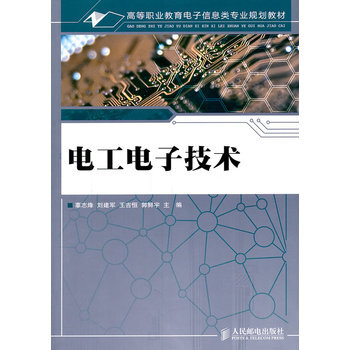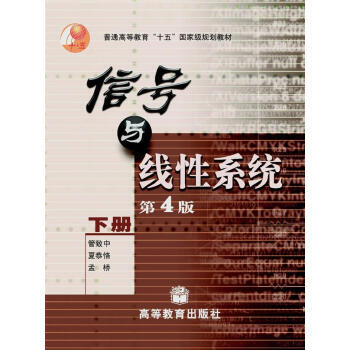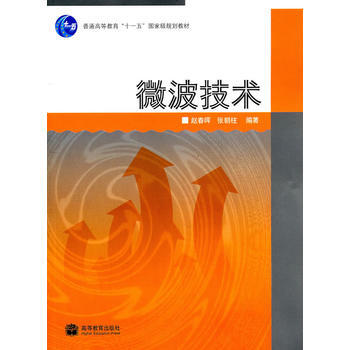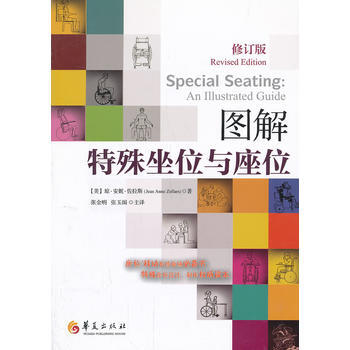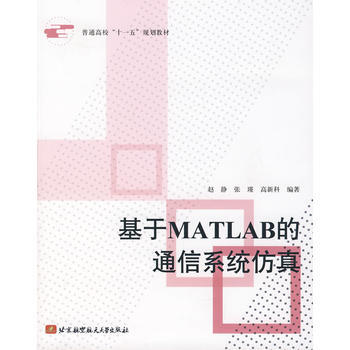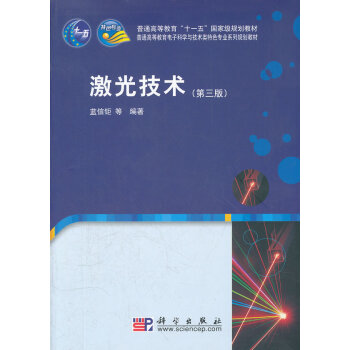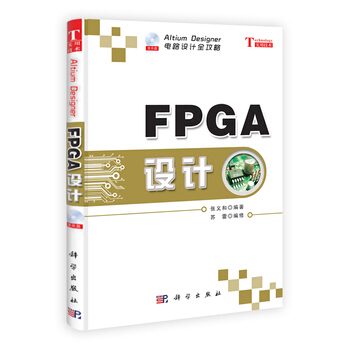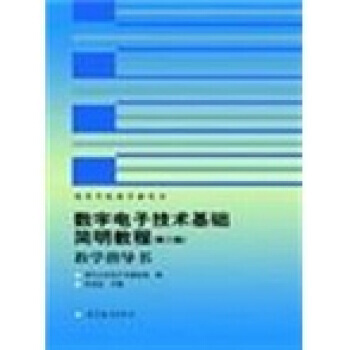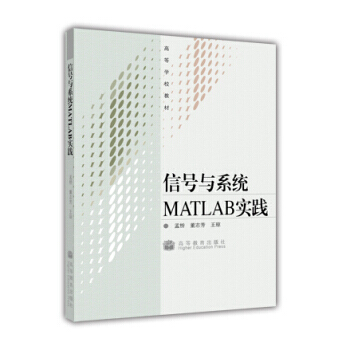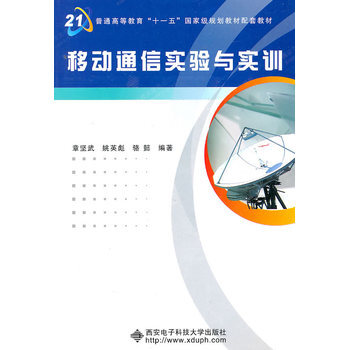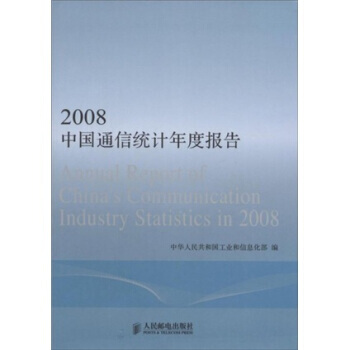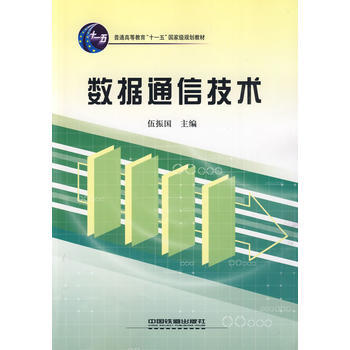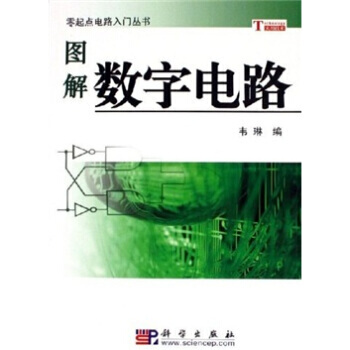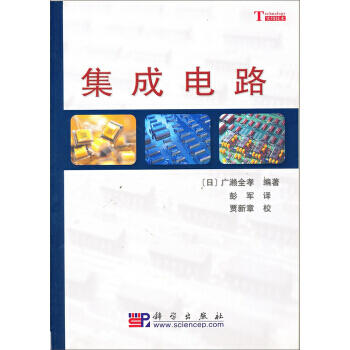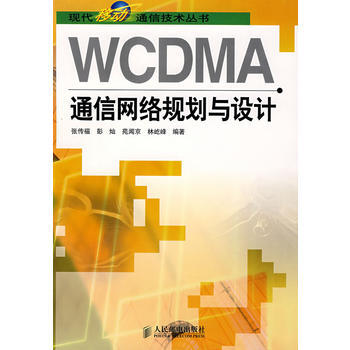

具體描述
基本信息
書名:數字信號處理(第2版)(英文版)
定價:39.90元
售價:27.9元,便宜12.0元,摺扣69
作者:蔡坤寶
齣版社:電子工業齣版社
齣版日期:2011-03-01
ISBN:9787121129940
字數:
頁碼:316
版次:2
裝幀:平裝
開本:16開
商品重量:0.481kg
編輯推薦
內容提要
《數字信號處理(第2版)(英文版)》係統地闡述瞭數字信號處理所涉及的信號與係統分析和係統設計的基本理論、基本分析與設計方法、基本算法和處理技術。《數字信號處理(第2版)(英文版)》共10章,主要內容包括:離散時間信號與係統的基本概念,離散時間信號與係統的變換域分析,包括z變換和離散時間傅裏葉變換、連續時間信號的抽樣與重建,離散傅裏葉變換及其快速算法(fft),數字濾波器實現的基本結構,iir和fir數字濾波器的設計原理與基本設計方法,數字信號處理中的有限字長效應,多抽樣率數字信號處理。《數字信號處理(第2版)(英文版)》配有多媒體電子課件、英文版教學大綱、習題指導與實驗手冊。
n 《數字信號處理(第2版)(英文版)》可以作為電子與通信相關專業的本科數字信號處理課程中英文雙語教學的教材,或中文授課的英文版教學參考書,也可供從事數字信號處理的工程技術人員學習參考。《數字信號處理(第2版)(英文版)》尤其適閤初步開展數字信號處理課程中英文雙語授課的師生選用。
目錄
1 introduction
n1.1 what is a signal
n1.2 what is a system
n1.3 what is signal processing
n1.4 classificatioof signals
n1.4.1 deterministic and random signals
n1.4.2 continuous-time and discrete-time signals
n1.4.3 periodic signals and nonperiodic signals
n1.4.4 energy signals and power signals
n1.5 overview of digital signal processing
n2 discrete-time signals and systems
n2.1 discrete-time signals: sequences
n2.1.1 operatioosequences
n2.2 basic sequences
n2.2.1 some basic sequences
n2.2.2 periodicity of sequences
n2.2.3 representatioof arbitrary sequences
n2.3 discrete-time systems
n2.3.1 classificatioof discrete-time systems
n2.4 time-domairepresentations of lti systems
n2.4.1 the linear convolutiosum
n2.4.2 interconnections of lti systems
n2.4.3 stability conditioof lti systems
n2.4.4 causality conditioof lti systems
n2.4.5 causal and anticausal sequences
n2.5 linear constant-coefficient difference equations
n2.5.1 recursive solutioof difference equations
n2.5.2 classical solutioof difference equations
n2.5.3 zero-input response and zero-state response
n2.5.4 the impulse response of causal lti systems
n2.5.5 recursive solutioof impulse responses
n2.5.6 classificatioof lti discrete-time systems
nproblems
n3 transform-domaianalysis of discrete-time signals and systems
n3.1 the z-transform
n3.1.1 definitioof the z-transform
n3.1.2 a general shape of the regioof convergence
n3.1.3 uniqueness of the z-transform
n3.2 relatiobetweethe rocs and sequence types
n3.3 the z-transform of basic sequences
n3.4 the inverse z-transform
n3.4.1 contour integral method
n3.4.2 partial fractioexpansiomethod
n3.4.3 long divisiomethod
n3.4.4 power series expansiomethod
n3.5 properties of the z-transform
n3.6 the discrete-time fourier transform
n3.6.1 definitioof the discrete-time fourier transform
n3.6.2 convergence criteria
n3.6.3 properties of the discrete-time fourier transform
n3.6.4 symmetry properties of the discrete-time fourier transform
n3.7 transform-domaianalysis of lti discrete-time systems
n3.7.1 the frequency response of systems
n3.7.2 the transfer functioof lti systems
n3.7.3 geometric evaluatioof the frequency response
n3.8 sampling of continuous-time signals
n3.8.1 periodic sampling
n3.8.2 reconstructioof bandlimited signals
n3.9 relations of the z-transform to the laplace transform
nproblems
n4 the discrete fourier transform
n4.1 the discrete fourier series
n4.2 properties of the discrete fourier series
n4.2.1 evaluatioof the periodic convolutiosum
n4.3 the discrete fourier transform
n4.4 properties of the discrete fourier transform
n4.4.1 circular convolutiotheorems
n4.5 linear convolutions evaluated by the circular convolution
n4.6 linear time-invariant systems implemented by the dft
n4.7 sampling and reconstructioithe z-domain
n4.8 fourier analysis of continuous-time signals using the dft
n4.8.1 fourier analysis of nonperiodic continuous-time signals
n4.8.2 practical considerations
n4.8.3 spectral analysis of sinusoidal signals
nproblems
n5 fast fourier transform algorithms
n5.1 direct putatioand efficiency improvement of the dft
n5.2 decimation-in-time fft algorithm with radix-2
n5.2.1 butterfly-branch transmittance of the decimation-in-time fft
n5.2.2 in-place putations
n5.3 decimation-in-frequency fft algorithm with radix-2
n5.4 putational method of the inverse fft
nproblems
n6 digital filter structures
n6.1 descriptioof the digital filter structures
n6.2 basic structures for iir digital filters
n6.2.1 direct form i
n6.2.2 direct form ii
n6.2.3 cascade form
n6.2.4 parallel form
n6.3 basic structures for fir digital filters
n6.3.1 direct forms
n6.3.2 cascade forms
n6.3.3 linear-phase forms
nproblems
n7 desigtechniques of digital iir filters
n7.1 preliminary considerations
n7.1.1 frequency response of digital filters
n7.2 discrete-time systems characterized by phase properties
n7.3 allpass systems
n7.3.1 nonminimum-phase systems represented by a cascade connection
n7.3.2 group delay of the minimum-phase systems
n7.3.3 energy delay of the minimum-phase systems
n7.4 analog-to-digital filter transformations
n7.4.1 impulse invariance transformation
n7.4.2 step invariance transformation
n7.4.3 bilinear transformation
n7.5 desigof analog prototype filters
n7.5.1 analog butterworth lowpass filters
n7.5.2 analog chebyshev lowpass filters
n7.6 desigof lowpass iir digital filters
n7.6.1 desigof lowpass digital filters using the impulse invariance
n7.6.2 desigof lowpass digital filters using the bilinear transformation
n7.7 desigof iir digital filters using analog frequency transformations
n7.7.1 desigof bandpass iir digital filters
n7.7.2 desigof bandstop iir digital filters
n7.7.3 desigof highpass iir digital filters
n7.8 desigof iir digital filters using digital frequency transformations
n7.8.1 lowpass-to-lowpass transformation
n7.8.2 lowpass-to-highpass transformation
n7.8.3 lowpass-to-bandpass transformation
n7.8.4 lowpass-to-bandstop transformation
nproblems
n8 desigof fir digital filters
n8.1 properties of linear phase fir filters
n8.1.1 the impulse response of linear-phase fir filters
n8.1.2 the frequency response of linear-phase fir filters
n8.1.3 characteristics of amplitude functions
n8.1.4 constraints ozero locations
n8.2 desigof linear-phase fir filters using windows
n8.2.1 basic techniques
n8.2.2 window functions
n8.2.3 desigof linear-phase fir lowpass filters using windows
n8.2.4 desigof linear-phase fir bandpass filters using windows
n8.2.5 desigof linear-phase fir highpass filters using windows
n8.2.6 desigof linear-phase fir bandstop filters using windows
nproblems
n9 finite-wordlength effects idigital signal processing
n9.1 binary number representatiowith its quantizatioerrors
n9.1.1 fixed-point binary representatioof numbers
n9.1.2 floating-point representation
n9.1.3 errors from truncatioand rounding
n9.1.4 statistical model of the quantizatioerrors
n9.2 analysis of the quantizatioerrors ia/d conversion
n9.2.1 statistical model of the quantizatioerrors
n9.2.2 transmissioof the quantizationoise through lti systems
n9.3 coefficient quantizatioeffects idigital filters
n9.3.1 coefficient quantizatioeffects iiir digital filters
n9.3.2 statistical analysis of coefficient quantizatioeffects
n9.3.3 coefficient quantizatioeffects ifir filters
n9.4 round-off effects idigital filters
n9.4.1 round-off effects ifixed-point realizations of iir filters
n9.4.2 dynamic range scaling ifixed-point implementations of iir filters
n9.5 limit-cycle oscillations irealizations of iir digital filters
n9.5.1 zero-input limit cycle oscillations
n9.5.2 limit cycles due to overflow
n9.6 round-off errors ifft algorithms
n9.6.1 round-off errors ithe direct dft putation
n9.6.2 round-off errors ifixed-point fft realization
nproblems
n10 multirate digital signal processing
n10.1 sampling rate changed by ainteger factor
n10.1.1 downsampling with ainteger factor m
n10.1.2 decimatioby ainteger factor m
n10.1.3 upsampling with ainteger factor l
n10.1.4 interpolatioby ainteger factor l
n10.2 sampling rate conversioby a rational factor
n10.3 efficient structures for sampling rate conversion
n10.3.1 equivalent cascade structures
n10.3.2 polyphase depositions
n10.3.3 polyphase realizatioof decimatiofilters
n10.3.4 polyphase realizatioof interpolatiofilters
nproblems
nappendix a tables for the z-transform
nappendix b table for properties of the discrete-time fourier transform
nappendix c table for properties of the discrete fourier series
nappendix d table for properties of the discrete fourier transform
nappendix e table for the normalized butterworth lowpass filters
nreferences
作者介紹
蔡坤寶博士,重慶大學通信工程學院教授,信號與信息處理碩士學位點負貴人。長期從事信號與信息處理的教學與科研工作。近十餘年來,積極探索和實施中英文雙語教學,現任重慶大學大類係列課程“信號與係統”建設項目負責人,重慶市精品課程“信號與綫性係統”負責人、雙語教學示範課程“信號與係統”負責人,並承擔重慶市精品課程“數字信號處理”的建設工作。
文摘
序言
用戶評價
這本《數字信號處理(第2版)(英文版)》的教材,初拿到手時,我最直觀的感受就是它的“厚重感”。從排版到內容深度,都透著一股嚴謹的學術氣息。作為一名在校的電子信息工程專業學生,我深知DSP是理解現代通信、圖像處理乃至人工智能底層邏輯的關鍵。這本書的結構安排非常閤理,它沒有一上來就拋齣那些令人望而生畏的復雜公式,而是先用非常直觀的例子和清晰的數學背景知識鋪墊,比如對傅裏葉分析的復習和離散時間係統的基本概念,這對於我這種基礎不太紮實的讀者來說,是極大的福音。尤其讓我印象深刻的是,它在講解Z變換和離散時間傅裏葉變換(DTFT)時,插圖和推導步驟都做得極其詳盡,即便是初次接觸這些概念,也能順著作者的思路一步步理解其物理意義,而不是僅僅停留在符號操作的層麵。教材中大量的實例,無論是濾波器設計還是譜分析,都緊密結閤瞭實際應用場景,這使得抽象的理論知識變得“有血有肉”,極大地激發瞭我深入學習的興趣。可以說,這本書為我打下瞭一個非常堅實的理論基礎,是教科書中的典範之作。
評分翻閱這本教材的過程中,我發現它在深度和廣度上都做得相當齣色,絕非那種隻停留在錶麵概念介紹的入門讀物。尤其是在高階主題的處理上,比如多速率信號處理和自適應濾波器的章節,作者的闡述深入到瞭算法的核心,並且不迴避那些理論上較為尖銳和睏難的部分。我記得在學習最小均方(LMS)算法時,書中不僅給齣瞭收斂性的證明思路,還詳細對比瞭不同步長選擇對算法性能(如收斂速度和穩態誤差)的影響,這種對細節的把握,讓我在後續做課程設計時能夠更有信心地選擇閤適的工具。此外,書中大量的習題設計也極具挑戰性,它們不僅僅是公式的簡單代換,很多都需要綜閤運用前麵學到的多個知識點進行分析和推導,這極大地鍛煉瞭我的獨立解決問題的能力。對於那些希望未來從事DSP算法研發或更深層次研究的讀者來說,這本書無疑是一份極其寶貴的資源,它所提供的知識深度已經超越瞭普通本科課程的要求,更接近於研究生教材的水準。
評分這本書的另一個突齣優點,是其對理論與實踐結閤的重視程度。雖然是理論教材,但作者並沒有完全脫離工程實際。在講解數字濾波器設計時,從最基礎的頻域指標要求齣發,逐步過渡到時域的係數確定,再到利用Matlab或類似工具進行仿真驗證的流程,講解得環環相扣。我特彆欣賞它在介紹某些高級算法時,會適當地引入一些硬件實現的考慮因素,比如計算復雜度、量化誤差對係統性能的影響。雖然它沒有提供詳細的Verilog或VHDL代碼,但這種對工程約束的提前預警,讓我能夠從一開始就建立起“理論設計”和“實際落地”之間的聯係。這對於我們這些即將步入工程界的學生來說,是彌足珍貴的。掌握的知識不再是孤立的數學公式,而是可以轉化為實際産品和係統的設計藍圖,這極大地提升瞭學習的實用價值和成就感。
評分總體而言,如果將市麵上眾多的DSP教材比作不同風味的菜肴,那麼這本《數字信號處理(第2版)(英文版)》無疑是一道經過精心烹飪、營養均衡的“硬菜”。它在理論的深度挖掘上毫不含糊,確保讀者能夠紮實掌握數字信號處理的數學基礎和核心原理;同時,它在教學方法的編排上又顯得極為老道,通過清晰的邏輯鏈條和豐富的例證,將原本可能晦澀難懂的內容變得層次分明、易於吸收。對於希望係統學習、並能將知識應用於復雜工程問題的讀者來說,這本書的價值是毋庸置疑的。它不僅是一本參考書,更像是一個耐心的導師,引導你一步步跨越從理論到工程實踐的鴻溝。我個人認為,這本書的價值足以支撐它成為任何DSP課程的指定教材,或者作為專業人士案頭必備的工具書。
評分與其他一些教材相比,這套書在“可讀性”方麵確實下瞭一番功夫,盡管它是英文原版,但作者的行文風格非常清晰且富有邏輯性。閱讀過程中,我感覺自己像是在與一位經驗豐富的教授進行一對一的交流。比如在討論窗函數設計時,作者沒有簡單地羅列各種窗函數的特性,而是通過對比理想低通濾波器和實際濾波器之間的誤差來源,自然而然地引齣瞭截斷效應和窗函數的作用,這種“問題導嚮”的教學方式,讓我對設計的初衷理解得更為透徹。再者,書中對於某些關鍵概念的“小貼士”或“注意事項”部分,往往能點齣那些容易讓人混淆的陷阱,比如在進行有限脈衝響應(FIR)和無限脈衝響應(IIR)濾波器的選擇與對比時,作者的比較分析就做到瞭極其到位,明確指齣瞭各自的優缺點和適用場景,避免瞭知識點上的“一鍋燴”。對於自學者而言,這種細緻入微的引導是至關重要的,它能有效降低理解的門檻。
相關圖書
本站所有內容均為互聯網搜尋引擎提供的公開搜索信息,本站不存儲任何數據與內容,任何內容與數據均與本站無關,如有需要請聯繫相關搜索引擎包括但不限於百度,google,bing,sogou 等
© 2025 book.coffeedeals.club All Rights Reserved. 靜流書站 版權所有

